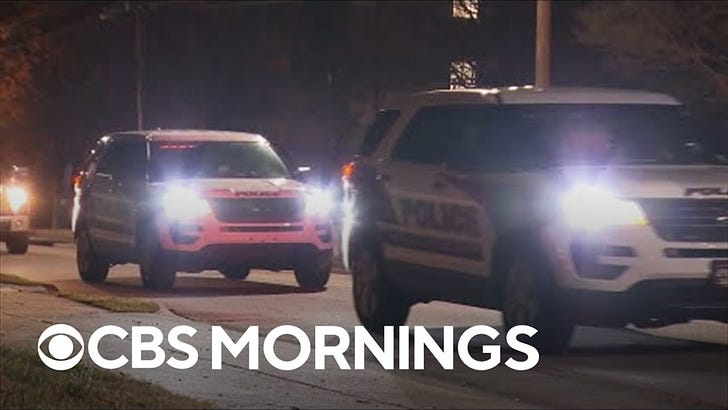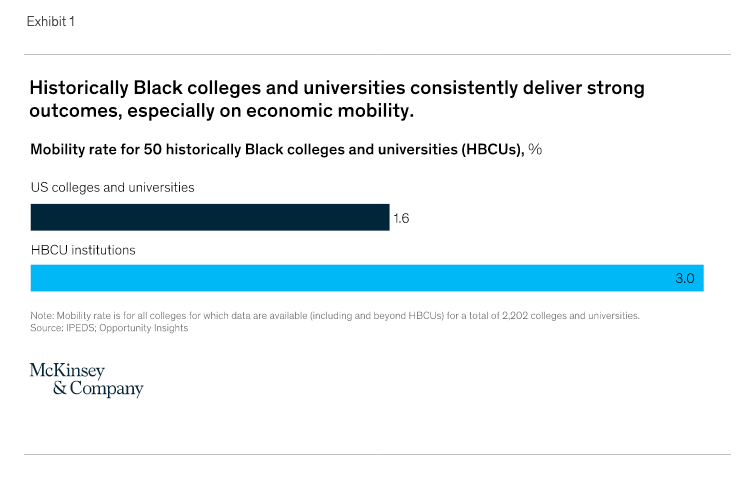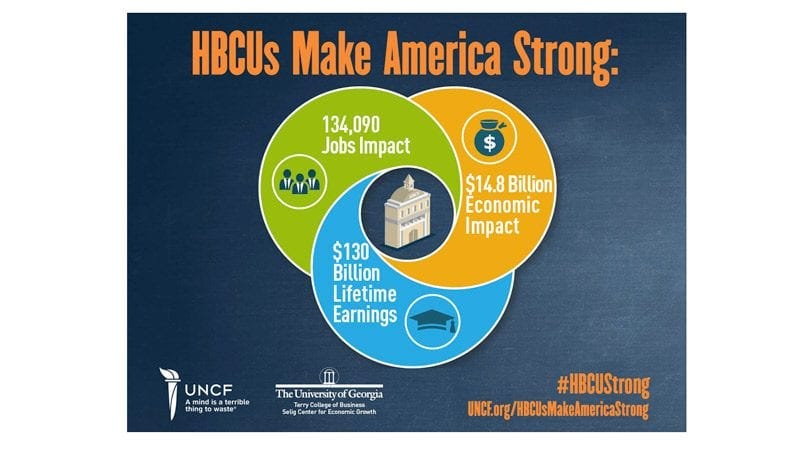HBCUs Face Bomb Threats .... & Funding Threats, Too
HBCUs have always been historic targets of systemic racism, hostile policymaking and ruinous underfunding. However, that could change if the Senate approves a $10 billion investment
Publisher’s Riff
Historically Black Colleges and Universities (HBCUs) have faced three days of bomb threats in just one month. The latest series of threats occurred on the first day of Black History Month, and involved 13 different HBCU institutions in just that day alone. While, thankfully, no explosive or hazardous materials have been found and there are no reports of casualties, the entire HBCU community - as well as the broader Black community - is clearly shaken. Still, these communities are not deterred in their efforts to continue strengthening the oldest and most essential higher education institutions for Black people in the nation. Indeed, HBCUs are engines for Black success: they have always been core pillars of Black community support, empowerment and achievement.
What these latest threats will do is place a spotlight on the current state of HBCUs and an assessment of where they are in contrast to their better-resourced PWI or “Predominantly White Institution” peers in the higher education space. While Education Secretary Miguel Cardona’s tweet of support on Tuesday is appreciated …

… it still leaves wide open questions surrounding the Biden administration’s next big plan to follow through with bold pledges and proposals to substantially fund HBCUs. Thanks to Congress and, in particular, both the unwillingness of any Republican and one lone Democratic Senator Joe Manchin to negotiate an acceptable Build Back Better legislative package, the funding promises secured for HBCUs have been indefinitely stalled. Ironically, the state Manchin represents holds one 1890 Land Grant HBCU: West Virginia State University.
Perhaps the renewed interest in HBCUs, while grim, can force policymakers to recharge efforts for ambitious investments in those institutions. Manchin has recently reiterated that Biden’s signature Build Back Better plan is “dead.” Interestingly enough, he said that about the legislative package designed to provide historic federal investments for HBCUs on the first day of Black History Month and just as 13 HBCUs were being locked down due to bomb threats.
Still: President Biden and other Senate Democrats have floated the prospect of moving forward with BBB by breaking it up into legislative pieces. Or: passing each component of the bill one piece at a time.
If that’s the case, advocates for HBCUs need to immediately seize this moment of media focus on their institutions as an opportunity to revive their funding needs. Yes: HBCUs are currently targets of domestic terrorists, but they have also been historic targets of systemic racism, hostile policymaking and ruinous underfunding on the state and federal level. Now would be the time to correct that legacy and make these institutions whole.
If the Infrastructure Bill passed, there’s no reason an HBCU funding advancement bill can’t pass, too … with investments that are double or triple what was negotiated in the failed BBB bill from December. As Congress enters the battle to pass separate elements of the Build Back Better Act, it will be essential to highlight HBCUs as engines of economic growth for the communities they serve and for the nation as a whole. Opponents of Build Back Better - and, therefore, opponents of support for HBCUs - can’t one one hand say they want Black communities to become more economically self-sufficient and less reliant on “government programs” or “entitlements,” yet say, on the other hand, that they’re going to block basic support for the Black-led institutions that are crucial to that self-sufficiency. There’s no logic to that.
HBCUs, especially the nineteen 1890 Land Grant HBCUs, have been “cheated” for years, as Forbes magazine points out in a timely piece ….
Between 1987 (the earliest year for which comprehensive data are available) and 2020, the 18 Black schools were underfunded by an aggregate of $12.8 billion, adjusted for inflation (see table). Over those 33 years, TSU received $1.9 billion less than it should have, had it been funded at the same per-student level as the University of Tennessee. The worst off? North Carolina Agricultural & Technical State University (NC A&T) in Greensboro, founded in 1891. Since 1987, it has been underfunded by an inflation-adjusted total of $2.8 billion. It’s not uniformly bad news. Schools in two states—Delaware and Ohio—were not underfunded at all.
It’s really that bad …
Hence, HBCU advocates must act fast to highlight why it’s important, in the face of these daunting threats, to improve struggling HBCUs. As a July 2021 McKinsey & Company report illustrates …
HBCUs represent just 3 percent of all higher-education institutions in the United States, but 10 percent of all Black students matriculating through US colleges are enrolled at HBCUs. What’s more, 17 percent of all bachelor’s degrees and 24 percent of all STEM-related bachelor’s degrees earned by Black students in the United States were conveyed by HBCUs, according to a 2019 report. HBCUs also supply more Black applicants to medical schools than non-HBCU institutions. And HBCUs have graduated 40 percent of all Black engineers; 40 percent of all Black US Congress members; 50 percent of all Black lawyers; and 80 percent of all Black judges.
They also provide more economic mobility opportunities for Black students and households than do non-HBCUs, and with far fewer resources …
These are also institutions making massive contributions to the larger economy …
The report projects that that if HBCUs enrolled, retained and graduated more students, the institutions could yield a $10 billion-per-year increase in Black worker incomes on whole. The growth of HBCUs could also translate into $1.2 billion in incremental business profit, an additional $1 billion in consumer spending and a $300 million reduction in student loan debt, according to the report.
And while the battle to fund HBCUs has been active and at some times contentious, the amount of money that Build Back Better will make available to HBCUs stands to be game-changing.
Build Better HBCUs
What’s at stake from Build Back Better is $10 billion of dollars of funding that is designated to expand PELL grants, increase access to scholarships, renovate old and dilapidated campuses, and bring the research and development capabilities of HBCUs to the forefront of the technological revolution.
Of the $10 billion, $2 billion was specifically designated for direct disbursement to HBCUs. The rest will be distributed among HBCUs, Tribal Colleges and Universities (TCIs) and Minority Serving Institutions (MSIs) through a combination of formula funding and competitive application processes (we still have an issue with this formula, which pits underserved minority institutions against each other). While that’s a significant decrease from the Biden administration’s original $90 billion plan - which was dramatically sliced by Congressional negotiators, see more here - it’s still historic and sorely needed, nevertheless.
The $2 billion going straight into the hands of HBCUs is coming from $6 billion total allocated to Higher Education Act Title III programs. An additional $3 billion will be allocated through the Research and Development Infrastructure Competitive Grant Program. According to the United Negro College Fund, HBCUs are likely to secure $1 - $1.5 billion through this program.
An additional $100 million is being made available to MSIs to update research facilities and instruments. HBCUs and other MSIs will also be able to apply to become an “uplift incubator,” giving them access to an additional $1 billion in competitive grants for small businesses in minority communities. Additional funding will also be made available for scholarships to students specifically seeking to attend medical schools through “Establishing Rural and Underserved Pathway to Practice Training Programs for Post-Baccalaureate Students and Medical Students” scholarships.
Of the approximately 5,300 colleges and universities in the Unites States, only 107 are HBCUs. Even so, they still produce over 50 percent of Black public school teachers, 70 percent of Black dentists and physicians, over half of all Black professionals, almost 20 percent of all Black STEM graduates, and 20 percent of all Black college graduates. If they’re doing that much with less, imagine what they could do with more.
HBCUs have proven time and time again that their return on investment is unparalleled. It’s time to close their funding gaps and allow them to take their positions at the forefront of America’s future. Pushing the Senate for more HBCU funding is a vital step in efforts to do just. HBCU supporters will need to up their game as place significant pressure on lawmakers. The Senate, knowing full well they represent states housing these powerful institutions, should stop playing games.






